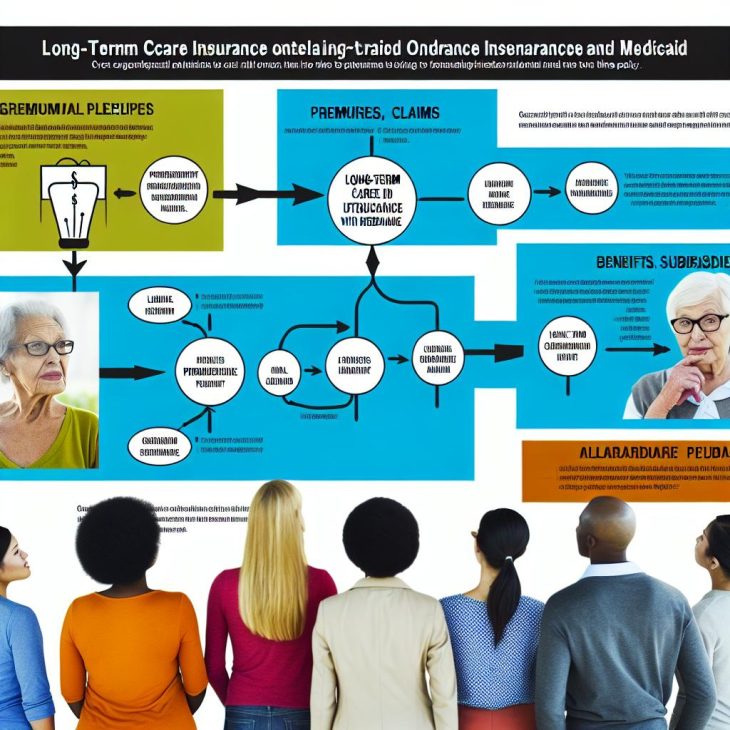
Understanding Long-Term Care Insurance and Medicaid
Long-term care insurance and Medicaid form essential components of the United States’ strategy for managing long-term care costs. With the population aging and healthcare expenses increasing, understanding how these two financial instruments interact is vital for individuals planning for future healthcare needs. This knowledge not only enables better financial preparation but also ensures that individuals receive the appropriate care when they need it.
What is Long-Term Care Insurance?
Long-term care (LTC) insurance is a specialized form of insurance coverage that financially safeguards individuals against the costs associated with long-term caregiving needs. These needs typically arise due to chronic illnesses, disabilities, or other conditions that affect the ability to perform everyday activities. Unlike regular health insurance, which focuses on medical care, LTC insurance covers a range of services such as assistance with daily tasks like bathing, dressing, eating, and moving around.
These services can be provided in a variety of settings, which include personal homes, nursing homes, or assisted living facilities, offering individuals flexibility based on their preferences and health conditions. Over a lifetime, individuals who invest in LTC insurance pay regular premiums. These payments can be significant, but they offer the advantage of protecting a policyholder’s financial resources from being depleted by long-term care costs.
Introduction to Medicaid
Medicaid is a government program that plays a crucial role in providing health coverage to millions of Americans. It caters to eligible low-income adults, children, expecting mothers, elderly individuals, and people with disabilities. A notable feature of Medicaid is its extensive coverage of long-term care services, which represent one of the largest expenditures under the program.
Given its role in aiding the underserved segment of the population, Medicaid functions as a partnership between federal and state governments. However, it’s important to realize that Medicaid eligibility and benefits can differ significantly from one state to another. This variability is essential to keep in mind for individuals who might potentially qualify for benefits and are planning their long-term care strategies accordingly.
Interaction Between Long-Term Care Insurance and Medicaid
The interplay between LTC insurance and Medicaid is multifaceted, involving distinct eligibility criteria and coverage options. Understanding this relationship is crucial for leveraging these resources effectively when planning for long-term care.
Asset and Income Protection
Long-term care insurance serves a pivotal role in safeguarding an individual’s savings and assets by covering long-term care services that would otherwise deplete personal financial resources. This is particularly important because, to qualify for Medicaid, individuals are generally required to reduce their assets to a minimal amount defined by the program’s financial criteria. By covering the cost of care, LTC insurance allows policyholders to retain more of their assets, potentially delaying or altogether bypassing the need to meet Medicaid’s asset spend down requirement.
Medicaid Spend Down Requirement
An effective strategy for integrating LTC insurance with Medicaid involves utilizing LTC benefits to manage expenses until an individual’s assets reach a threshold that makes them eligible for Medicaid. This spend-down process enables individuals to gradually reduce their financial holdings while benefiting from the care options provided through LTC insurance. By accomplishing this, policyholders can maintain some of their personal assets rather than having to use them entirely to qualify for Medicaid benefits.
Long-Term Care Partnership Programs
In several states, Long-Term Care Partnership Programs have been established to encourage the purchase of LTC insurance by offering an incentive: a level of asset protection when qualifying for Medicaid. Through these programs, individuals who have beneficiaries from LTC insurance can retain a greater amount of their assets above the typical Medicaid limit. This retained amount is equivalent to what their LTC insurance has disbursed for their care, aligning the objectives of personal asset protection and eligibility for Medicaid.
Conclusion
For individuals planning their long-term care needs, considering both long-term care insurance and Medicaid is essential. Understanding how these two resources interact can help optimize financial stability while ensuring access to necessary care. An informed strategy, developed in consultation with a financial advisor or an elder law attorney, can help navigate the complexities of this landscape and tailor a plan that aligns with one’s unique financial and caregiving requirements.
Moreover, for those seeking more detailed assistance, visiting Medicaid’s official website can offer valuable insights and resources. Alternatively, consulting with a certified insurance advisor can provide personalized guidance, helping to clarify any ambiguities surrounding eligibility, coverage options, and how best to integrate LTC insurance with Medicaid for effective long-term care planning.
This article was last updated on: May 20, 2025
